Range Rover Review 2025: Price, specs & boot space
Written by Ivan Aistrop
Quick overview
Pros
- Wonderful to drive
- Beautifully appointed interior
- Lots of space for people and luggage
Cons
- Ludicrously expensive
- A couple of ergonomic annoyances
- Historically, Range Rover reliability has been horrendous
Overall verdict on the Range Rover
"Large luxury SUV offerings aren’t exactly a rarity these days, but no contender can match the Range Rover for its combination of class, luxury, and ruggedness. The latest car is more brilliant than ever in a number of ways, although do bear in mind that it’s now even more ludicrously expensive than ever, and there are still lingering doubts over reliability."
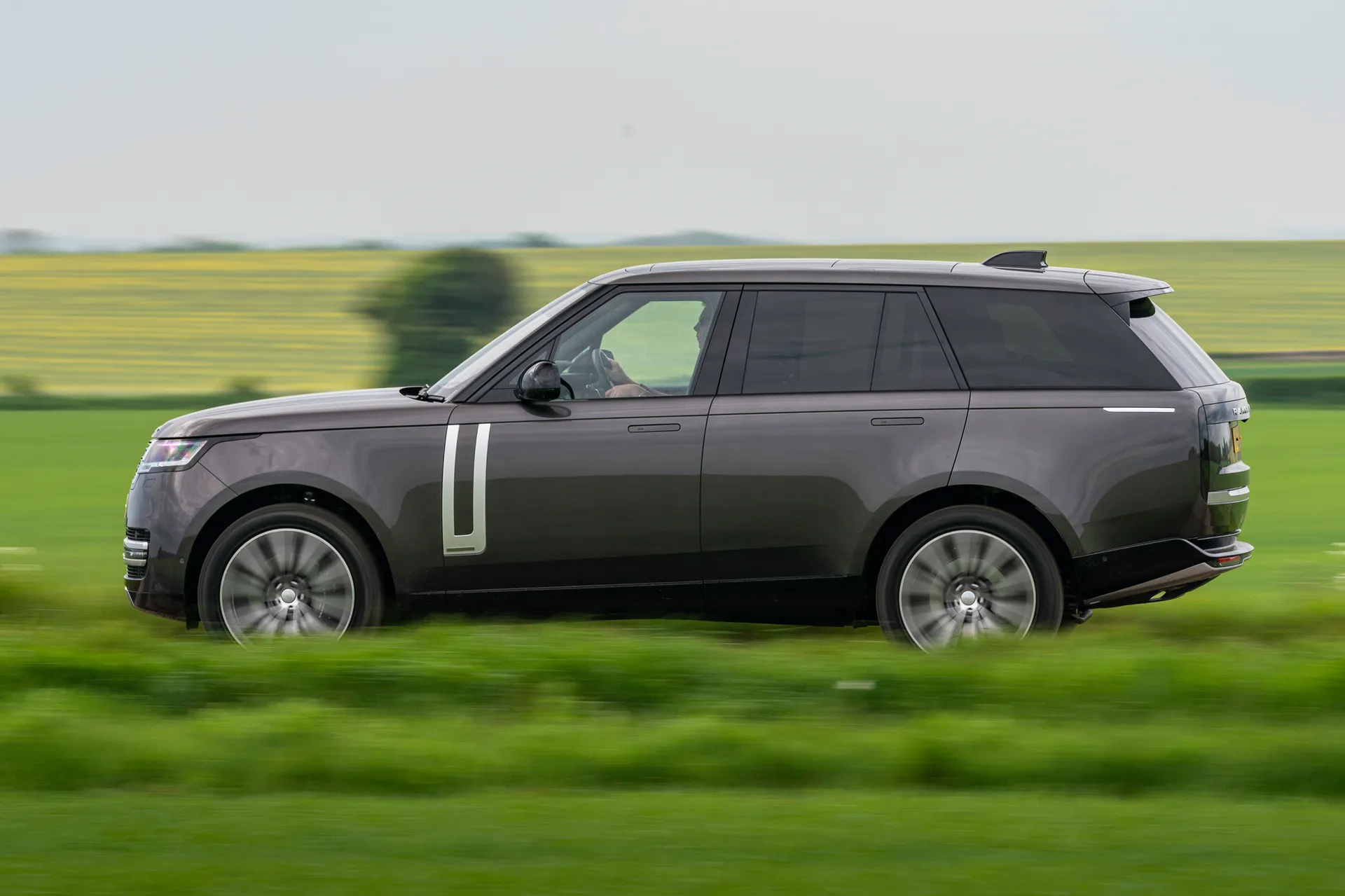
If you need an introduction to the Range Rover, then you’ve probably been living under a rock for the last 50 years. This is the car that pioneered the idea of the large luxury 4x4 more than half a century ago. It’s a concept that’s been copied by every premium manufacturer since, and in the modern car market, you can’t move for rivals, but none of them can match the Range Rover’s combination of image, class and ruggedness: talk about ‘often imitated, never duplicated’.
Now in its fifth generation, the latest Range Rover was released in 2022, and it’s a distillation and concentration of the Range Rover’s traditional traits. For instance, it’s more upmarket than ever before, with higher quality, more luxury equipment and a fantastically ludicrous price that pitches it against rivals from Bentley and Rolls-Royce as much as from BMW and Mercedes. It’s also more dynamically advanced than ever, with four-wheel steering and active anti-roll bars making it onto the standard equipment list alongside the active air suspension. And importantly for a Range Rover, it’s more capable off-road than ever - more so than any of its road-focused rivals - with four-wheel drive, low-range gears and the latest version of Land Rover’s incredible Terrain Response off-roading system. Remember that rock you were living under? Well, it would need to be quite big to suffice as a dwelling, but no matter how big, it still wouldn’t stop the Range Rover from getting to where it wanted to go.
And despite its longstanding heritage, the Range Rover is moving with the times. Almost all of the powerful petrol and diesel engines on offer are available with mild hybrid technology, and several plug-in hybrid versions are also offered, with a fully electric version not far away. There’s a powertrain for every taste: it’s just a matter of how fast you want to go, and how much you can afford to pay.
Pace isn’t in short supply, then, and otherwise, the on-road driving experience is typical Range Rover. The ride is sumptuous and comfortable, the refinement is exemplary, while the handling is rather more tidy than you might be expecting. Another thing you’ll recognise from previous Range Rovers is its generous space for passengers and luggage, and the commandingly characteristic arm-on-the-window-sill driving position.
Yes, the lingering doubt over how reliable the car will prove is another thing it shares with predecessors, and those predecessors haven’t exactly covered themselves in glory. However, all of the time it's working properly, the Range Rover is a car you’ll adore.
Looking for a used car for sale? We've got 100s of Land Rover Approved Used Cars for Sale for you to choose from, including a wide range of Range Rovers for sale. If you're looking for the older version, you need our used Range Rover (2013-2022) review.
Is the Range Rover right for you?
If you want a huge luxury SUV that’s a match for any other car of its type for quality, luxury, practicality, equipment, comfort, refinement and on-road ability, then the Range Rover is definitely a car you should consider. If you want your car to combine all that with genuine off-roading ability, then it’s arguably the only car you should consider. Yes, it’s phenomenally expensive to buy and run, and a traditionally very iffy reliability record means you’ll have to keep your fingers crossed that it doesn’t go on the fritz, but provided it behaves, it’s a car you’ll never get tired of.
What’s the best Range Rover model/engine to choose?
So far, we’ve only had a chance to drive one version, the D350 diesel, and although it’s a relatively restrained choice, we can’t see why you’d need anything more, thanks to its relative affordability, plentiful performance and impressive refinement. However, if you’re a company car driver, you’ll probably want to check out one of the plug-in hybrid models - or even better, the forthcoming all-electric version - to keep your monthly Benefit-in-kind tax bills down. On the trim front, there really isn’t a great deal that entry-level SE trim doesn’t give you. However, HSE trim does give you a few desirable niceties on top, so we wouldn’t blame you if you made that upgrade.
What other cars are similar to the Range Rover?
Like pretty much all of Land Rover’s products, the Range Rover has been pushing further and further upmarket as the years have gone by, and these days, it sits with the elite in terms of price and stature. Gone are the days where you’d also be considering an Audi Q7 or Volvo XC90. These days, the Range Rover plays rival to cars like the BMW X7 and Mercedes GLS, as well as treading on the toes of proper rarified SUVs such as the Aston Martin DBX and Bentley Bentayga. It’s really only the ludicrously expensive Rolls-Royce Cullinan that makes the Range Rover feel inferior.
Comfort and design: Range Rover interior
"The latest Range Rover is a car that feels every bit as plush as its astronomical pricetag demands. The materials are thoughtfully selected and beautifully finished, and regardless of how many seats you choose to have in your car, there’s plenty of space for passengers and luggage."
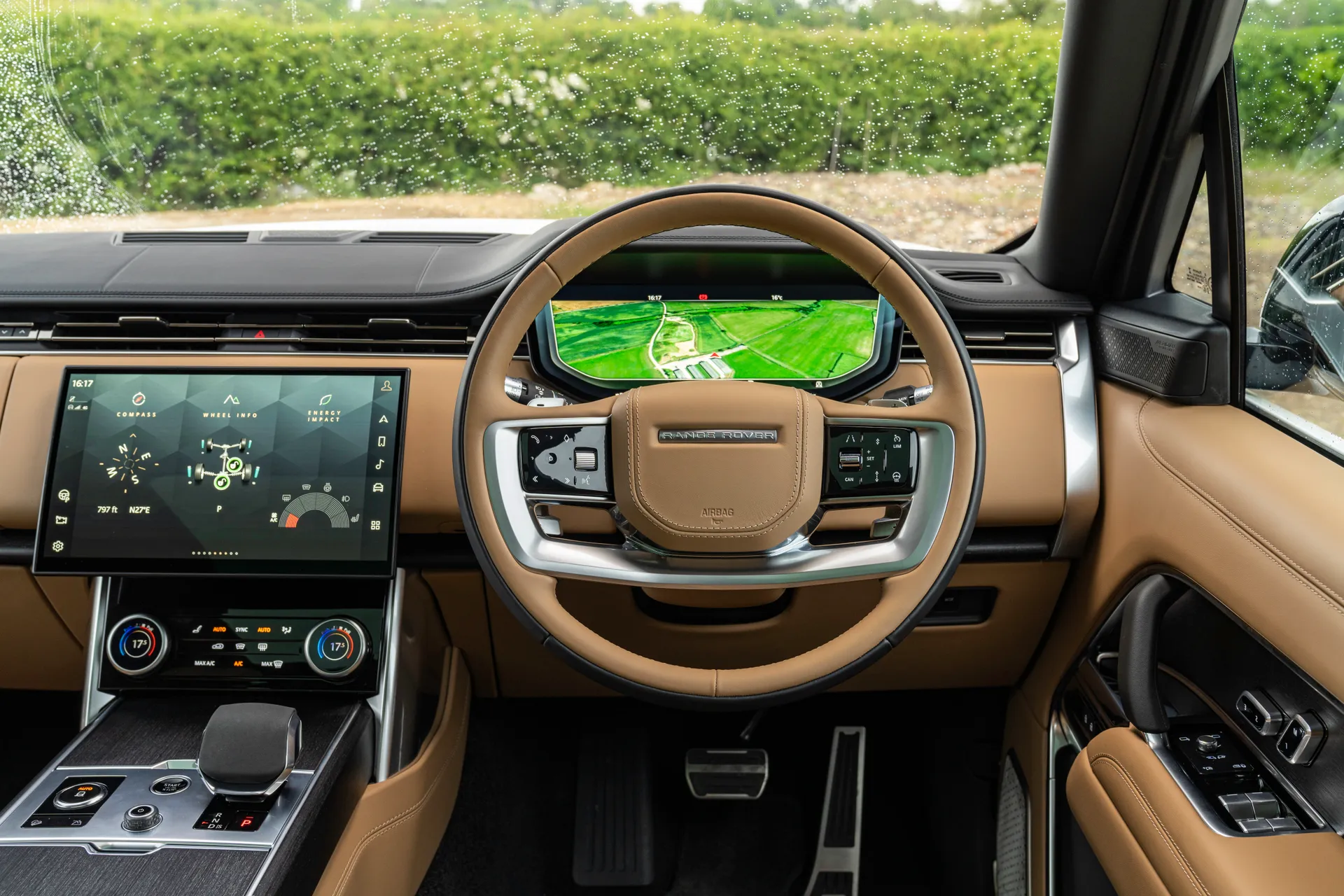
Traditionally, the driving position of the Range Rover has been one of its main attractions, and the latest car has that same elbow-on-the-window-sill attitude as previous offerings. With seemingly endless electric adjustment, fine-tuning your driving position is super quick and easy, too.
What’s more, that commanding driving position, combined with the car’s huge windows and slab-sided design, means you have incredibly good visibility all around the car, and it’s easy to see where extremities like the end of the bonnet end.
With so many functions being operated by the touchscreen, there aren’t too many other controls to be found, but the aircon system does get its own set of adjusters. However, most of these are touch-sensitive, and would be easier to use if they were conventional buttons. There are also touch-sensitive buttons on the steering wheel, and these are fiddly to use and easy to hit by accident.
Quality and finish
This is one of the main reasons you buy a Range Rover, so it’s good news that, even though the last Range Rover was sumptuous in the extreme, the standards of finish inside the new car have risen even further. Literally every single surface you encounter inside the cabin has a plush and tactile feel, while the thoughtful colour schemes and the variety of carefully selected textures and surfaces on show make things feel interesting as well as effortlessly plush. The glossy-looking finish of the various digital screens also helps to deliver a certain high-tech vibe, so even given the Range Rover’s astronomical pricetag, the interior has enough sophistication and luxuriousness to justify it.
Infotainment: Touchscreen, USB, nav and stereo in the Range Rover
Land Rover’s infotainment technology hasn’t always been up to snuff when compared to the best systems out there, but the company’s most recent efforts have been much more like it, with vast improvements being made in the last few years.
In the centre of the Range Rover’s dashboard, you’ll find a large 13.1-inch colour touchscreen running the company’s latest Pivi Pro software. The system delivers all the functionality you expect, and some you might not. Satellite navigation, DAB radio, Bluetooth, and wireless Apple CarPlay and Android Auto are supported, and so too is online music streaming and Amazon Alexa voice control.
Despite its complexity, the system is fairly easy to find your way around thanks to a logical layout, and you can also customise your home screen with configurable shortcuts for your most-used functions, to make life even easier. The graphics are crisp, clear and stylish, too. However, you do have to press the screen quite hard for it to register an input, and it sometimes takes a wee bit too long to respond.
As is commonplace these days, conventional instrument dials are replaced in the Range Rover by yet another digital readout, in this case measuring 13.7 inches. It looks great and, happily, it’s easy to read. Rear-seat passengers can also have their own 11.4-inch media screens, but these are a hugely expensive option, especially when an iPad does a similar job.
Space and practicality: Range Rover boot space
You can have the Range Rover in either standard-wheelbase form or long-wheelbase form, and the latter can be had with either five- or seven seats, while there’s also an option pack that swaps the three-seat rear bench for two individual rear chairs with reclining and massaging functions.
Front space is as generous as you’d expect, and even in the more compact version, there’s lots of headroom and legroom in the back, enough for tall adults to stretch out luxuriously. Select the long-wheelbase model, and rear-seat legroom grows to limousine levels.
The rearmost seats in seven-seater versions are roomy enough to comfortably accommodate a tall adult, too, and that’s not something you can say about many luxury seven-seaters. There’s definitely more space back there than you get in an Audi Q7 or Volvo XC90.
That layout does make the boot pretty weeny, though, with just 312 litres on offer when you pack right up to the roof. Travel in five-seat mode, and you get an enormous 725 litres of load space (measured to the window line) in the standard wheelbase car, while that’s reduced slightly to 713 litres in the long wheelbase car, due to the way the seats are laid out. Fold down all the rear seats to make your Range Rover a two-seater, and the standard car gives with a whopping extended load area of 1,842 litres, while the long-wheelbase car does even better with a staggering 2,601 litres. The Range Rover’s trademark split tailgate gives tremendously easy access, too.
Handling and ride quality: What is the Range Rover like to drive?
"The Range Rover feels sublime on the road thanks to a cosseting, limousine-like ride and surprisingly tidy handling. The vast range of engines has something for everyone, too. And while being brilliant on the road, it’s truly untouchable off it."
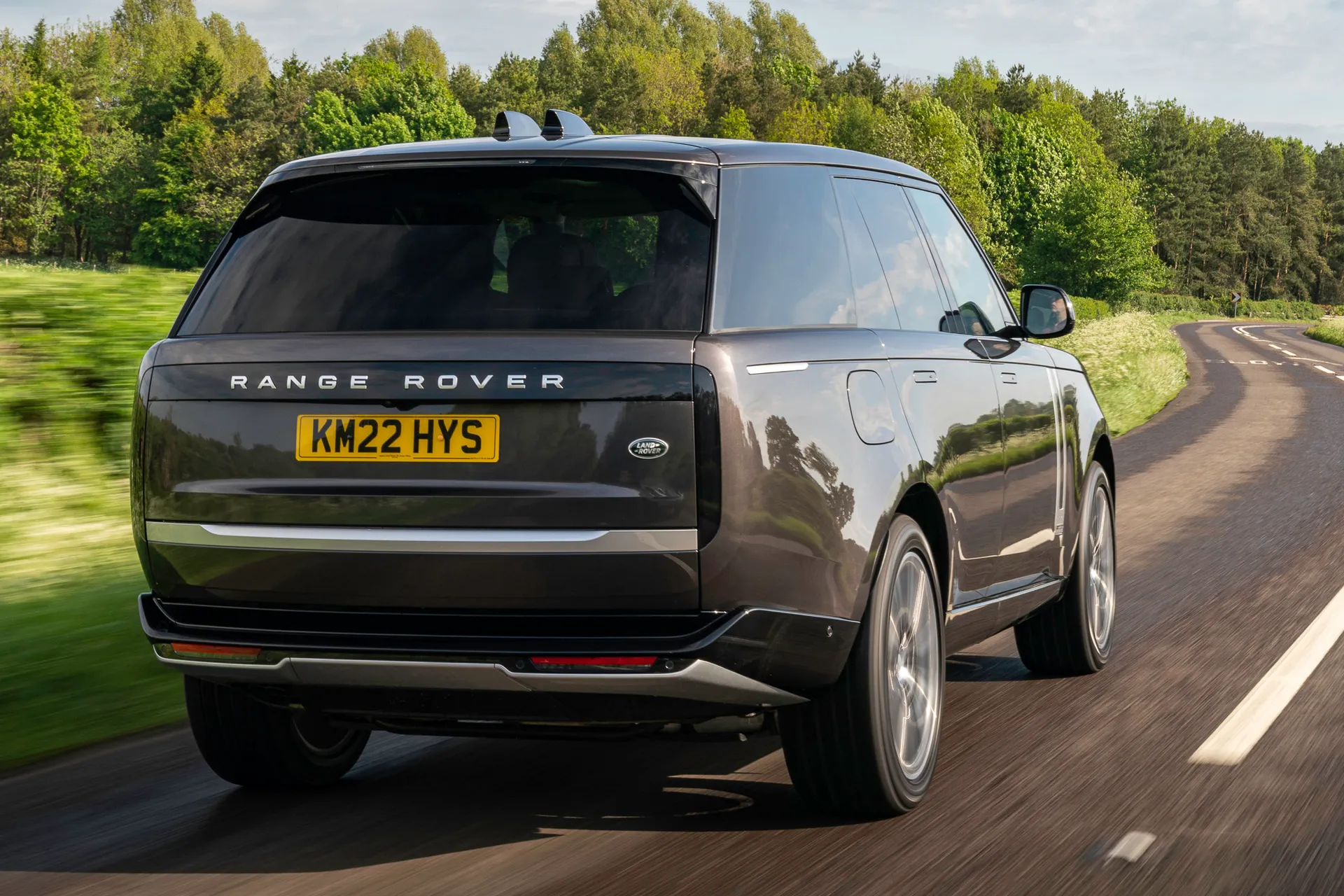
Ride comfort has always been one of the Range Rover’s party pieces, and that hasn’t changed with the latest car. Adaptive air suspension comes as standard, and this wafts you serenely along in a comfortable yet controlled manner, pounding lumps and bumps into submission as it goes. The enormous wheels of the car - ranging between 20- and 23 inches - does mean that you can occasionally feel a smidge more tremor than you expect through the suspension at low urban speeds. It’s still an enormously comfortable car regardless, though, and if you want to minimise this effect, go for a car with the smallest wheels you can find, as this will make a big difference.
And despite feeling like it's the size of a cross-channel ferry, the Range Rover doesn’t handle like one. Active anti-roll bars come as standard, and these stop the body from slopping over too violently as you change direction. The standard all-wheel steering also helps. At higher speeds, the rear wheels turn in the same direction as the fronts by a few degrees to help make the car turn marginally quicker and aid stability. The real benefit of the system comes at low speeds, though, where the rear wheels turn in the opposite direction to the fronts, which helps cut the turning circle and make the car more manoeuvrable. Indeed, the system cuts the turning circle by more than a metre, making it comparable to a Volkswagen Golf on that score. And whatever your speed, the steering is very light, yet also very precise, which further contributes to a generally very relaxed and unflustered driving experience.
And while the Range Rover is as good as any of its rivals on the road, it’s way better than any of them off it. All-wheel drive with low-ratio gears, plus stupendously lofty ground clearance and Land Rover’s sophisticated Terrain Response 2 off-roading programme, means this car will keep you going through the sticky stuff long after rivals have given up and gone home.
What engines and gearboxes are available in the Range Rover?
This generation of Range Rover hasn’t been around all that long, but various engine choices have come and gone during the car’s time on sale, so we’ll talk about the engine range in its entirety, not just what’s available on the new car market right now.
The diesels are the most humble choices, all of them being 3.0-litre in-line six-cylinder units. The D250 has 245bhp, the D300 has 296bhp and the D350 has 345bhp. When it comes to figures for the benchmark 0-62mph sprint, the D250 logs a time of 8.3 seconds, while the D300 cuts it to 6.9 seconds and the D350 to 6.1 seconds.
You then have a couple of 3.0-litre in-line six-cylinder petrol engines in the form of the P360 and P400, with 355bhp and 394bhp, respectively. The former does the benchmark spring in 6.3 seconds, while the latter trims it to 5.8 seconds.
You then have a pair of BMW-sourced V8 petrols. The P530 has 523bhp and does 0-62mph in 4.6 seconds, while the 606bhp P615 trims that to 4.5 seconds.
You then have a range of plug-in hybrid choices - the P440e, P510e and P550e - that team the 3.0-litre petrol engine with an electric motor and a 38.2kWh battery (31.8kWh useable) for an electric range of up to 75 miles. These have between 434bhp and 542bhp, and will do the benchmark sprint in between 5.0 and 5.7 seconds.
All engines are mated to an eight-speed automatic gearbox.
The only one we’ve had a chance to sample so far is the D350 diesel, and despite being one of the more humble choices on offer, we can’t really see why you’d need anything more. A small squeeze of the right-hand pedal is enough to get this enormous car moving at a serious rate of knots, and that applies whether you’re pulling away from the mark or picking up speed on the move. The automatic gearbox can, very occasionally, stumble a bit when moving up or down the gears, but most of the time, it’s smooth, refined and responsive enough.
Refinement and noise levels
Despite being a diesel, the one engine we’ve had the opportunity to try, the D350, displays an exemplary level of refinement. If you shut your eyes and really concentrate (we wouldn’t recommend doing this while driving, obviously…), you can just about identify that it’s a diesel due to the very faintest of grumbling noises under reasonably hard acceleration, but most of the time, it’s so quiet and smooth that you’d be genuinely hard-pushed to tell what kind of fuel it uses. And when the diesels are so good, we can only imagine how refined the petrols will be.
Road noise is also exceptionally well contained despite the car’s huge tyres, but the blunt shape of the front end does result in a bit of wind noise being generated in the windscreen area, but you probably only hear that because everything else is so quiet. This is an extremely tranquil car in which to while away the miles.
Safety equipment: How safe is the Range Rover?
All versions of the Range Rover come with a vast variety of safety measures and automatic driving aids to help you avoid getting into an accident. There’s adaptive cruise control with steering assistance - which basically means the car can pretty much drive itself in some situations - and there’s also automatic emergency braking, blind spot assistance, lane departure warning, rear cross traffic alert and traffic sign recognition. The car was tested by Euro NCAP in 2022, meaning it was tested against properly difficult testing standards, yet it still managed to register the full five-star rating, and so should be commended for that.
MPG and fuel costs: What does a Range Rover cost to run?
"The Range Rover has always been fantastically expensive to both buy and run, and the latest version takes that to even more fantastical heights. Insurance premiums will also be pricey, as will maintenance, but Land Rover’s traditionally abysmal reliability record might well be of more concern."
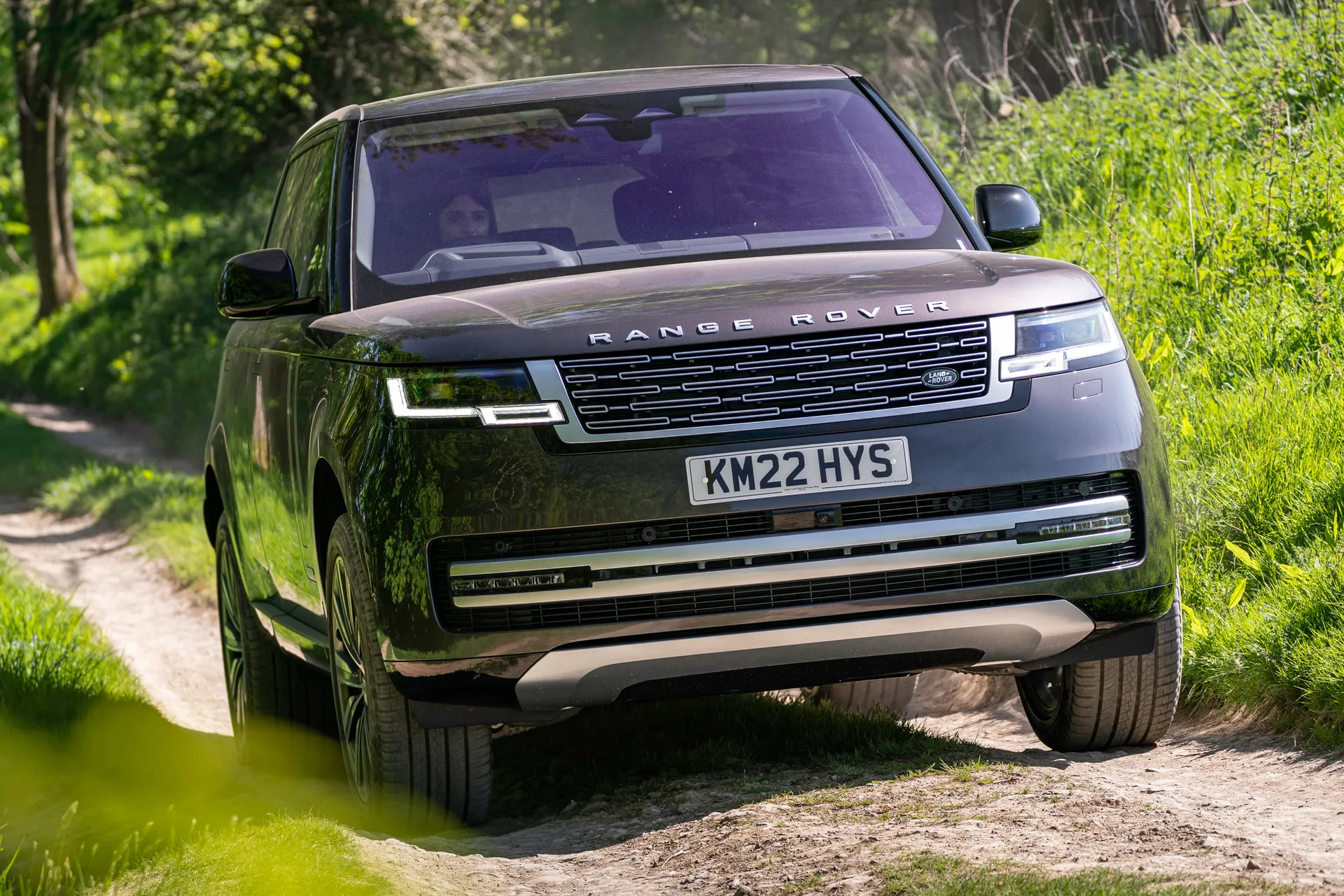
Running a car as colossal as the Range Rover is never going to be cheap. If you want to stand a fighting chance of not pouring all your earnings into the fuel tank, you’ll probably be best off with one of the diesels, as unfashionable as those are. The official WLTP figures suggest that these are capable of up to 37mpg on average, regardless of which you go for. The corresponding figures for the more humble petrol versions stand at around 30mpg, while if you go for a V8, that drops to 25mpg. With all these figures, though, we’d bank on getting a good bit less than these laboratory-sourced totals in the real world, especially if you regularly use the prodigious performance on offer.
Select one of the PHEV plug-in hybrid versions, and official figures suggest you can go up to 75 miles on a full charge. However, these same figures also suggest an average fuel return of up to almost 450 miles, so they’re probably best taken with a sizeable pinch of salt. For the best economy, you’ll need to charge up regularly and confine your journeys to purely short hops that can be done using only electric power, because as soon as the petrol engine fires up, your car will become very thirsty indeed.
Range Rover reliability and warranty
Ah. So we’ve arrived at the elephant in the room, then. It’s fair to say that, traditionally, Land Rover’s reliability record has been nothing short of shocking. Owners report that trouble occurs on a very regular basis, and that problems are often time-consuming - and if out of warranty, expensive - to repair.
That’s not a reputation that’ll be helped by the brand’s performance in the latest HonestJohn.co.uk Satisfaction Index, in which Land Rover was voted as the least reliable manufacturer in the whole study. Most of the complaints in this instance were about the Discovery Sport, which is a very different car to the Range Rover, but it still doesn’t inspire confidence that the firm’s flagship will be trouble-free. And as there isn’t yet any proper data to go on with the latest Range Rover, we’ll just have to keep our fingers crossed. The car comes with a three-year, unlimited-mileage warranty.
Range Rover insurance groups and costs
This one’s nice and easy: all Range Rover models sit in group 50 for insurance, regardless of engine or trim. However, group 50 is the top - and most expensive - insurance group there is, so premiums will be as high as premiums get. Mind you, that should be of no great surprise on a car as big, powerful and expensive as this, and if you can afford to even think about buying a Range Rover, then you can probably afford to insure it.
VED car tax: What is the annual road tax on a Range Rover.
Petrol and diesel versions of the Range Rover are taxed at the same flat rate as any other purely combustion-engined car, meaning an annual tax bill of £180. Choosing one of the plug-in hybrid models, meanwhile, earns you a barely-worth-having £10 discount.
However, the lofty price of the Range Rover means that all versions are considered by the Exchequer to be ‘luxury cars’ (which they are, to be fair), meaning that you’ll also be liable for an additional surcharge of £390 on top of the flat rate, for a period of five years occurring between years two and six of the car’s life. Then again, if you can afford a Range Rover in the first place, that’s not likely to bother you too much.
Range Rover price
"As Land Rover’s other products have pushed further and further upmarket, the flagship Range Rover has had to follow suit. It’s always been an expensive car, but these days, even the most basic versions will set you back six figures when buying brand new. There are some useful savings to be had on the used market, though."
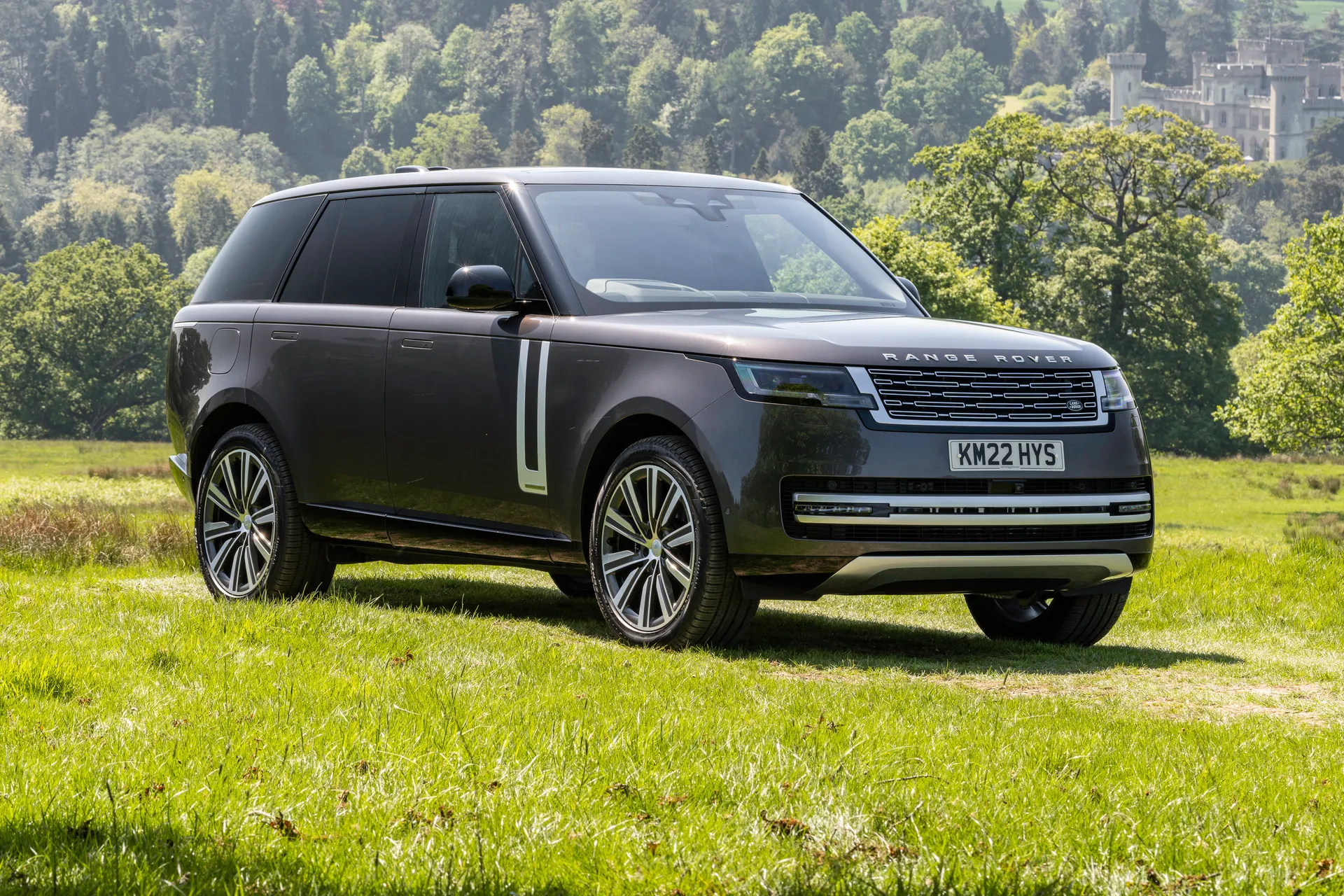
When it first went on sale in 2022, the entry-level versions started at around £90,000, but these days, those starting prices are now upwards of £100,000. Choose the highest-spec versions with the most potent powertrains, and prices rocket up to above £160,000, and that’s before you’ve even thought about ticking options boxes, although by the time you’re up to that kind of level, there won’t be all that many boxes left to tick.
Take a look at our classifieds, and there are some useful savings to be made. At the time of writing, there were some examples with between 15,000 and 30,000 miles on the clock for back down towards the ninety grand mark, but these were of a spec that would’ve cost a good slice more when brand new, so like-for-like, you’re still looking at a handy five-figure saving. However, buying a Range Rover still isn’t - and will never be - a cheap undertaking.
Trim levels and standard equipment
When every single version of the Range Rover costs six figures, you’d jolly well expect it to be lavishly equipped, so it’s just as well that it is. On top of all the infotainment and safety kit we’ve already mentioned, the entry-level SE version gets 21-inch alloy wheels, 20-way electrically adjustable front seats, Windsor Leather upholstery, heating for the front seats, steering wheel and windscreen, three-zone climate control, keyless entry, soft door closing and a fixed panoramic glass roof.
The HSE trim adds 22-inch wheels, ventilated seats, a Meridian sound system, a handsfree powered tailgate, a reversing camera function built into the rear view mirror, plus digital matrix LED headlights, which can maintain high beam illumination without dazzling oncoming traffic.
Autobiography trim adds a sliding panoramic roof, even more seat adjustment and a massage function, plus the reclining ‘Executive Class’ rear seats.
At the top of the range sit the SV models. These have pretty much every scrap of luxury kit you can think of, and are also offered with a vast array of personalisation options in regards to colourways and interior materials. Not prizes for guessing, though, that these are hugely expensive.
Ask the heycar experts: common questions
How much does the new Range Rover cost?
Who owns Range Rover?
Is there and electric Range Rover?
Get our latest advice, news and offers
Keep me updated by email with the latest advice, news and offers from heycar.
By submitting you agree to our privacy policy




